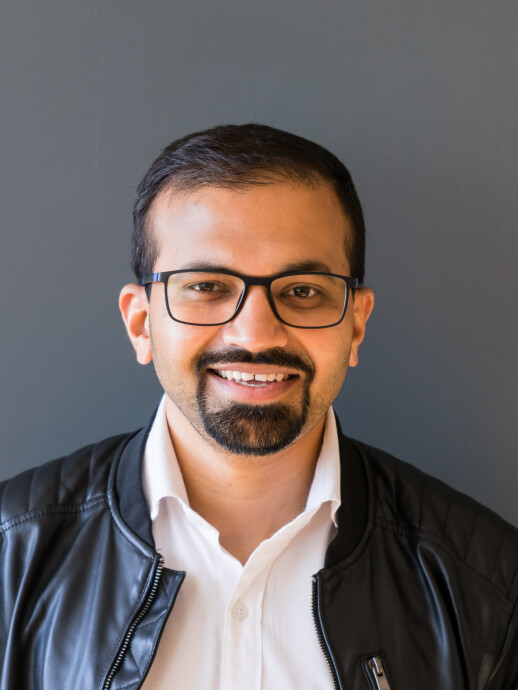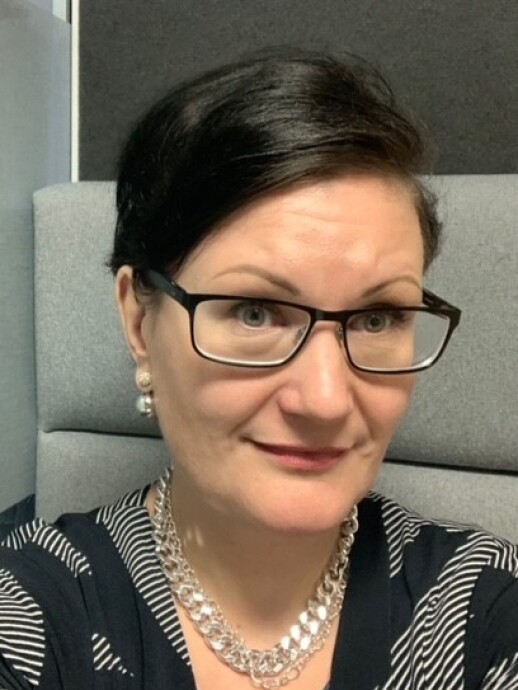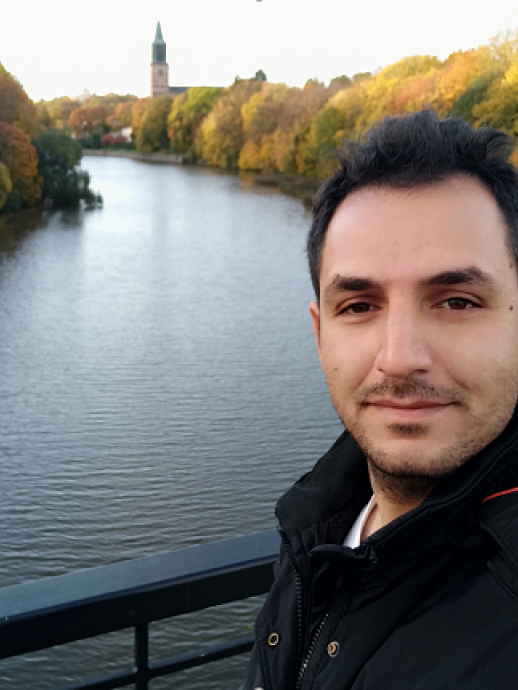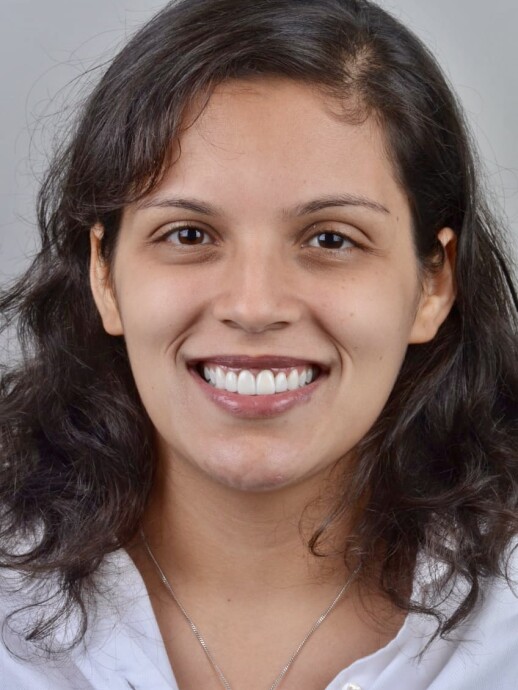Digital Manufacturing and Surface Engineering (DMS)
The DMS Research Group performs internationally recognized research in the field of digital manufacturing and surface engineering.
The group is co-lead by Prof. Antti Salminen and Prof. Ashish Ganvir.
Some of the topics that are covered under the broad umbrella of DMS are for examples:
- Digital materials (metals, ceramics, polymers and composites) processing using laser, plasma, combustion flames, electron-beam etc.;
- Digital robotized liquid (solution precursors, suspensions etc.) and solid (wire as well as powder) processing,
- Digital joining (e.g. welding) & 3D printing of materials
- Digital surface engineering: thin and thick films, tribology and corrosion of surfaces, modern thermal spray techniques, surface modification by thermal and mechanical means
- Process monitoring, modeling and simulations.
DMS as a newly established research group has renowned young and experienced experts working in the above-mentioned fields with combined industrial and academic experience of well over 50 years. The group´s ambition is to conduct applied industrially relevant yet fundamental scientifically driven research and development. Some of the target applications for DMS are biomedical, automotive, power generation, aerospace, space, marine, renewable energy and many more.
As of November 2023, the group has over 25 members working directly within the group or associated with it from other groups or other organizations. The group consists of several professors, adjunct professors, guest scientist, postdoctoral scientists, PhD/doctoral candidates, junior researchers (research assistants, interns etc.) and research engineers.
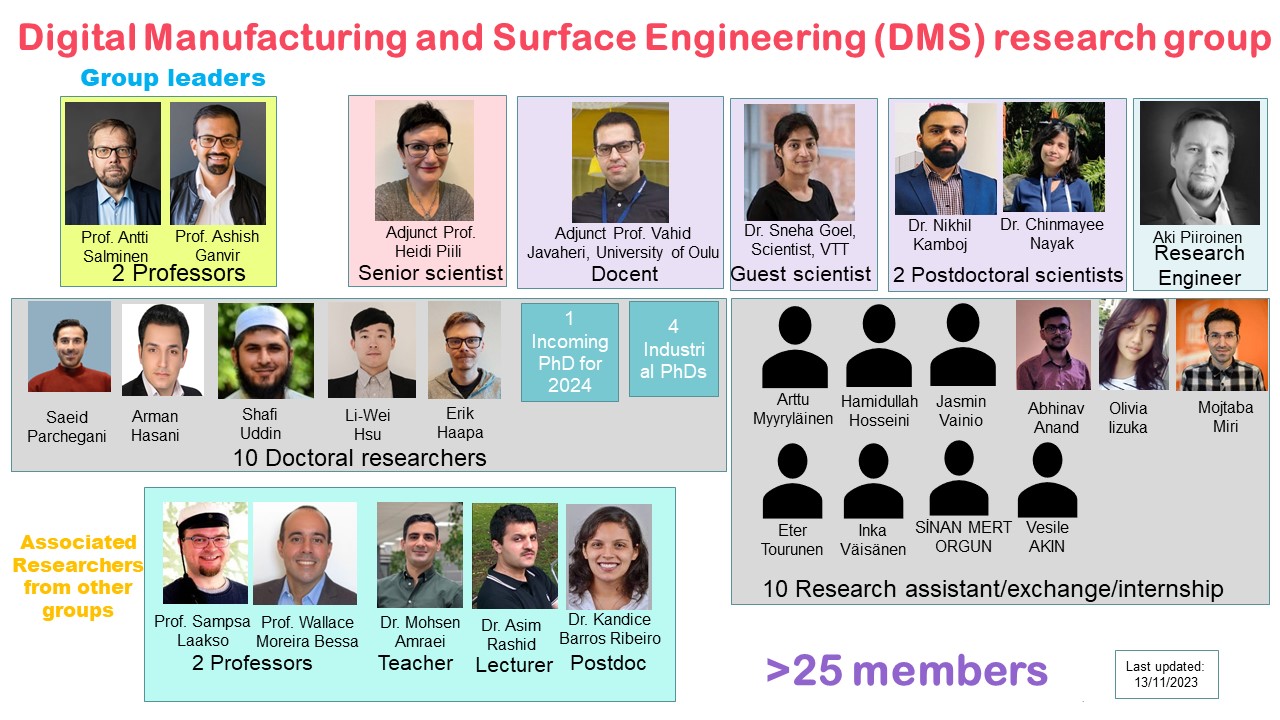
We are constantly growing and recruiting more researchers, especially post-docs, PhD students and MSc thesis students. Interested candidates who wish to apply for fellowships and work in our group are most welcome to contact us.
DMS infrastructure and facilities
Our DMS lab is very well equipped with advanced infrastructure required for conducting highly scientific as well as applied research activities within the field of digital manufacturing and surface engineering. DMS infrastructure is located in a collaborative facility called as “Machine Technology Centre (MTC)”. At MTC, the DMS lab is equipped with several digital manufacturing and surface engineering related facilities. For example, several additive manufacturing or 3D-printing machines, surface degradation testing such as corrosion and tribology, process monitoring sensors etc. DMS lab has strong ties with other units at UTU to access various materials testing and characterization tools such as electron and optical microscopes, X-ray diffraction, mechanical testing, feedstock (powder and liquid) characterization etc. Moreover, the researchers in DMS have strong collaboration with European large-scale infrastructure facilities (e.g. Paul Scherrer Institute (PSI), Switzerland) to conduct advanced analysis of digitally manufactured or surface engineered materials using synchrotron and neutrons.

